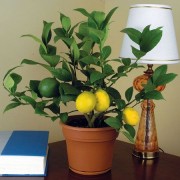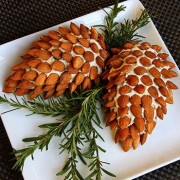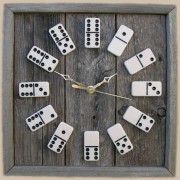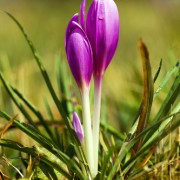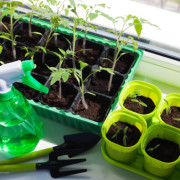Chef’s Delight – Indoor Herb Garden
No matter what type of cook you are, having some fresh herbs to add brings your cooking to the next level. An indoor herb garden is the best way to grow your favourite herbs, because they’re easy to maintain and can add to your home decor!
A kitchen window is an ideal location for a small herb garden, as seeing it every day will remind you to water, and be within reach when you’re cooking. When the herbs are close, you will be inspired by the scent and flavours at your fingertips and use them in all your cooking. You will be amazed at how easy it is to maintain the plants and how often you’ll use them!
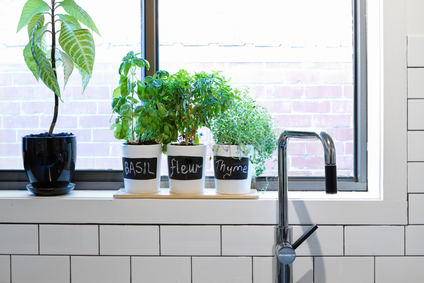
When planning your garden, think about what herbs you use most in your cooking and start with those. If you use italian seasoning a lot, choices like basil and oregano are great! Parsley comes in a few different forms and the fresh taste can be used in almost anything, or even just as a garnish on your plates! Rosemary and thyme are fragrant choices, while chives are very easy to grow and are incredibly versatile.
While you can purchase seeds and start your plants that way, it is much more satisfying to purchase the plant so you can start to use it right away. Choose the pots you want to display in your kitchen, ensuring there is sufficient drainage and room for root growth. If the planter you choose does not have a drainage hole, either drill one in the bottom or add rocks or glass beads to the bottom, allowing for air circulation and drainage.
Most herbs do not require a lot of work. Make sure you keep the soil moist but not soaking. A good way to check is with your finger; if the soil is dry to the touch, water it. Some plants require more water than others, so make sure to keep an eye on them. Indoor plants usually don’t need much weeding, but removal of dead leaves or shoots that aren’t taking hold reduces competition for nutrients. If your plants only get light from one direction, rotate the plants a quarter of a turn each day to ensure the plants are getting full light on all sides.
The satisfaction of growing your own herbs comes in using them. Basil leaves need pinched to avoid flowering and to extend production, as do oregano leaves. Parsley excels when grown indoors and outer leaves should be cut when harvesting, encouraging new growth. Rosemary and thyme can both be dried for use at any time of year. Chives should be cut down to the soil when harvesting, and if you have too much, you can freeze them in cubes, making it easy to toss a cube into a pot of soup or stew.
There are endless opportunities for sprucing up your kitchen decor with an indoor herb garden. You can choose painted pots, mason jars, tea cups…whatever your imagination comes up with!
Follow HomeShow Time’s board Indoor Herb Garden on Pinterest.


